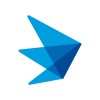Non-invasive Brain Stimulation and Occupational Therapy To Enhance Stroke Recovery (TDCS+OT)
Stroke, Cerebrovascular Accident, CVA

About this trial
This is an interventional treatment trial for Stroke focused on measuring Stroke, Ischemia, Infarction, Cerebrovascular Disorder, Central Nervous System Diseases, Brain Infarction, Brain Ischemia, Rehabilitation, Recovery, Neurorehabilitation, Plasticity
Eligibility Criteria
Inclusion Criteria:
- First time clinical ischemic stroke or cerebrovascular accident
- At least 5 months out from first ischemic stroke prior to study enrollment
Exclusion Criteria:
- More than 1 stroke (older strokes)
- Significant pre-stroke disability
- A terminal medical illness or disorder with survival of less than 1 year
- Co-existent major neurological or psychiatric diseases (e.g., epilepsy)
- Use of psychoactive drugs/medications - such as antidepressants,antipsychotic, stimulating agents
- Active participation in other stroke recovery trials testing interventions
Sites / Locations
- Beth Israel Deaconess Medical Center / Harvard Medical School
Arms of the Study
Arm 1
Arm 2
Active Comparator
Sham Comparator
Real-tDCS + PT-OT
Sham-tDCS + PT-OT
Each subject will receive up to 5 days of traditional physical-occupational therapy for at least 1 hour per day in the stroke recovery laboratory in combination with real transcranial direct current stimulation (tDCS) over the motor region for up to 30 min.
Each subject will receive up to 5 days of traditional physical-occupational therapy for at least 1 hour per day in the stroke recovery laboratory in combination with sham (pretend) tDCS for up to 30 min. over the motor region.
Outcomes
Primary Outcome Measures
Secondary Outcome Measures
Full Information
1. Study Identification
2. Study Status
3. Sponsor/Collaborators
4. Oversight
5. Study Description
6. Conditions and Keywords
7. Study Design
8. Arms, Groups, and Interventions
10. Eligibility
12. IPD Sharing Statement
Learn more about this trial
